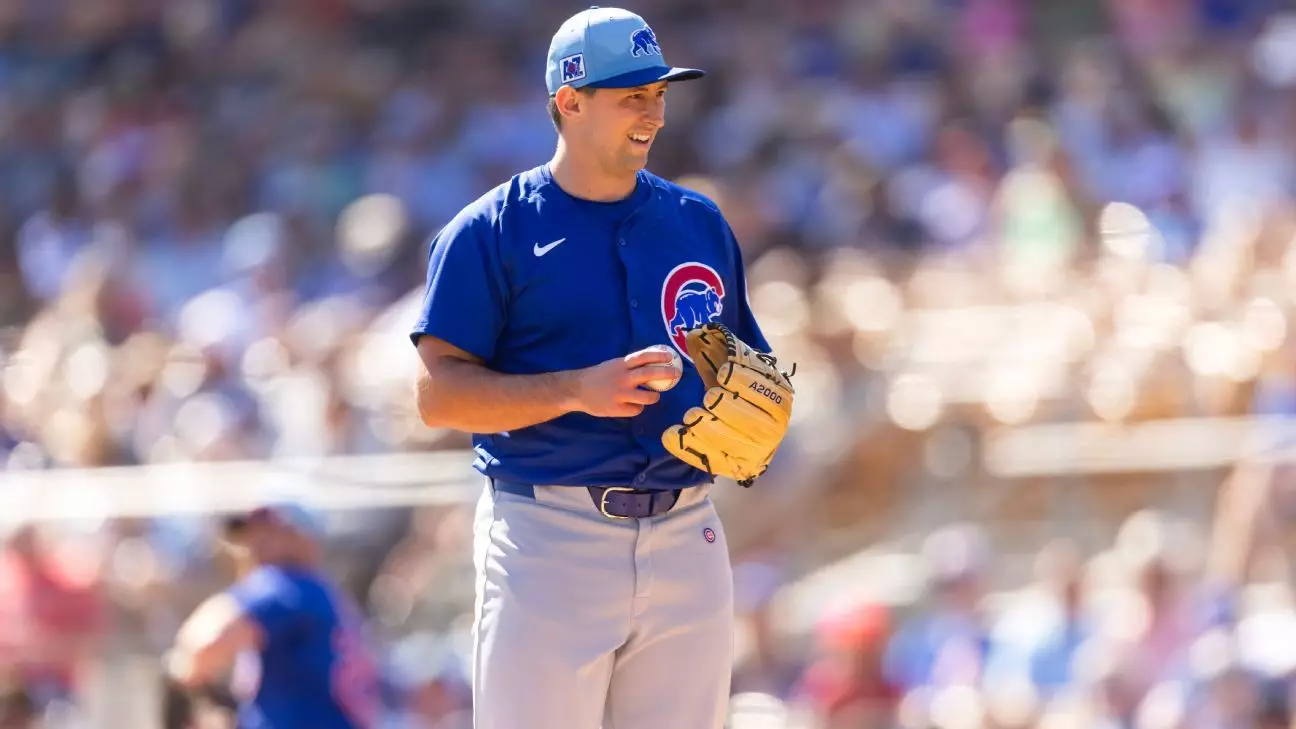In a historic moment during a spring training game in Glendale, Arizona, Chicago Cubs pitcher Cody Poteet made a significant mark on Major League Baseball (MLB) history. He was the first player to invoke a new challenge rule regarding ball and strike calls, reflecting the ongoing evolution of the game.
During the bottom of the first inning, in a game against the Los Angeles Dodgers, Poteet faced infielder Max Muncy and threw what he believed to be a perfectly placed fastball along the edges of the strike zone. However, home plate umpire Tony Randazzo deemed it a ball, leading Poteet to take a bold step—he tapped his head, signaling his intent to challenge the call. This moment marked a pivotal point not only for Poteet but for the league as a whole as they experimented with a system designed to enhance the fairness and accuracy of officiating.
Upon review, the pitch was indeed confirmed as a strike, flipping Muncy’s count from 1-1 to an intimidating 0-2. This initial challenge set a precedent, illustrating the potential impact of the new rule. Muncy, while acknowledging the unfortunate twist of being the first player to face this scenario, took the occurrence lightly, reflecting on the historical implications with a sense of humor. Indeed, this first use of the challenge system has opened a pandora’s box of possibilities for how games may unfold in the future.
The MLB’s decision to introduce a challenge system for balls and strikes signifies a significant departure from the traditional approach to officiating, where human error is often a contentious point. Under the new rule, each team has the right to challenge two calls per game. The power of the decision rests in the hands of the pitcher, catcher, or batter, each of whom must independently decide to contest a call without input from their teammates in the dugout.
This self-governance requires acute awareness of the game as well as confidence in one’s choices, fundamental traits for players at any level. Notably, Poteet’s familiarity with the system—gleaned from his time in the minor leagues—made him well-prepared to utilize this opportunity. As he stated, he felt that the pitch had been unfairly ruled a ball, validating his choice to take action.
As spring training progresses, early statistics from ongoing games suggest that the challenge system could have a significant effect on how teams approach pivotal moments. In the game following Poteet’s challenge, Cubs catcher Pablo Aliendo similarly initiated a challenge concerning a ball call, only to find the original decision upheld. This split—one successful challenge and one that failed—mirrors data from the minors, where challenges have shown a roughly even ratio of upholding and overturning calls.
During spring games, teams are averaging around four challenges per contest, painting a picture of frequent engagement with the new system. This activity indicates not only the players’ adaptation but also the natural tensions and debates that emerge when fine margins dictate outcomes.
While the implementation of this challenge system is confined to spring training for now, it has the potential to reshape the game significantly. Players like Muncy express optimism about its possible long-term adoption beyond spring training, emphasizing the need for absolute certainty before initiating a challenge. MLB’s leadership is reportedly considering feedback from players and coaches to assess whether or not the challenges will transition into regular-season play, potentially as early as 2026.
With five stadiums in Arizona and eight in Florida equipped with the necessary technology for this test, a variety of games will undergo the scrutiny of this new system. The feedback collected during this essential trial period will be crucial in deciding the trajectory of officiating in professional baseball moving forward.
In closing, as the Cubs triumphed over the Dodgers 12-4 in this groundbreaking game, the narrative surrounding ball and strike calls is likely to evolve, spying the intersection of technology and tradition. It invites fans to ponder how far technology can go in preserving the spirit of fairness and precision in America’s pastime.


Leave a Reply